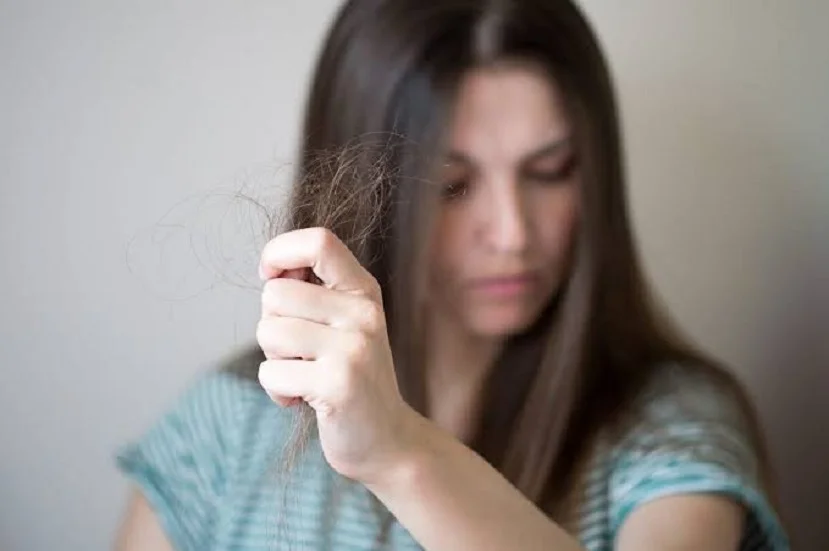
TRICHOTILLOMANIA: CAUSES AND TREATMENT
By Wasim Kakroo
PATHOLOGICAL hair pulling, also known as Trichotillomania, is a widespread yet underdiagnosed psychological condition. Trichotillomania is a condition in which people feel compelled to pluck their hair out.
Many persons with trichotillomania are unaware that they have a diagnosable mental health condition. They just think of their hair pulling as a nasty habit. Others may suffer from severe physical and mental symptoms related to it.
In this article, I will be discussing the symptoms and causes of trichotillomania, as well as the various treatment methods available.
What is Trichotillomania?
People who suffer from trichotillomania have an overwhelming desire to pull their hair out. Many people take out their scalp hair sometimes. People with trichotillomania, however, may pull hair from the various other parts of their body such as beards, eyelashes, or eyebrows.
Some people who suffer from trichotillomania eat the hair that they pluck from various parts of their body. It has the potential to cause serious gastrointestinal issues.
Trichotillomania develops in most people during their adolescence. Some of them may then battle with the disorder throughout adulthood, either continuously or occasionally.
When hair pulling is coupled with depression, it can impair social and occupational functioning. When you’re caught in a hair-pulling bind, you may feel helpless. However, it is a disorder that can be successfully addressed.
What are the symptoms of trichotillomania?
The various symptoms include:
- repetitive hair pulling without being aware
- a sensation of relief after pulling out hair
- inability to stop hair pulling, despite repeated attempts to stop
- anxiety and tension connected to hair pulling
- a need to undertake additional repetitive activities related to the hair (e.g., counting or twisting hairs)
- trichopagia or eating of the plucked hair
- skin discomfort or tingling at afflicted locations
- obvious hair loss or bald patches at affected areas.
Trichotillomania can be linked to a variety of mental health issues, including:
Anxiety
Depression
OCD (Obsessive Compulsive Disorder)
ADHD (Attention Deficit Hyperactivity Disorder)
Autism
What are the various risk factors and causes?
Doctors are unsure what causes trichotillomania to develop.
Some people claim that pulling their hair relieves boredom or tension while others may pull their hair to cope with negative feelings.
Certain variables can increase a person’s risk of getting trichotillomania. These risk factors include:
Genetic contribution: A person who has a first-degree relative (parent or sibling) with the condition is more likely to develop it themselves.
Childhood trauma: A person who has undergone childhood trauma is more prone to develop trichotillomania. Researchers have seen parallels with the triggers for obsessive-compulsive disorder and believe that chaotic, traumatic childhood events or strained early connections with parents or caregivers may be to blame for the condition’s emergence.
According to one study, more than two-thirds of sufferers of Trichotillomania had been through at least one traumatic event in their lives, with a fifth of them being diagnosed with post-traumatic stress disorder (PTSD). This has led to speculation that it is a type of self-soothing or a coping mechanism for some individuals.
Changes in neurophysiology or neurochemistry:
Changes in brain function or chemistry that could lead to trichotillomania are also being investigated by researchers. Such changes may affect the impulse control ability of their brain and hence cause hair pulling disorder.
What are the various treatments available for Trichotillomania?
Many persons suffering from trichotillomania do not seek treatment. Some people may not be aware that they have a diagnosable mental health condition and think of hair pulling as a bad habit. Others, for a number of reasons, may be hesitant to seek a diagnosis or treatment.
Treatment of Trichotillomania is determined by the severity of the symptoms. Frequently, a mental health professional will suggest the following:
Pharmacotherapy (Medications):
The various medications that may help include:
SSRIs (selective serotonin reuptake inhibitors) which are a type of antidepressant
clomipramine, a tricyclic antidepressant,
naltrexone, an opioid antagonist
olanzapine, an antipsychotic.
Behavioral Therapy
According to some studies, Habit Reversal Therapy (HRT), is the best type of behavioural therapy for treating trichotillomania (HRT). It is divided into five stages:
- Awareness training: The person learns to recognise the psychological and environmental elements that can lead to a hair-pulling episode.
Consider what kinds of situations make you want to pull your hair out. Is that something you only do when you’re depressed? Angry? Confused? Frustrated? Understanding what makes you want to pull your hair out can help you develop other, more positive coping strategies. Carrying ziplock bags and putting pulled hair in those bags can also help you measure your progress and comprehend how much hair you’re pulling out. Write down every time you pull your hair over the course of two weeks. Keep track of what happened soon before the hair-pulling, as well as your emotions before and after you pulled your hair. Take note of the time of day as well as the activities.
- Competing response training: The person practises substituting an alternative behaviour for hair pulling. One method that may help the sufferer quit pulling their hair is the “Notice, Interrupt, and Choose Plan.” This entails recognising when they’re tempted to take their hair out and interrupting the chain of emotions and the temptation to pull hair out by listening to pleasant reminders in their head. Then they have the option of doing something else, something that will relax and soothe them.
They can make a list of alternate behaviours that they can perform instead of hair pulling once they’ve discovered the warning signs and triggers. Whatever alternative behavior is chosen, it should be simple to carry out and to obtain. Here are some ideas for alternate behaviors to express emotions and feelings:
Scribbling or drawing on paper
Painting
Listening to music that expresses the feelings is a great way to unwind.
Making a phone call to a buddy
Cleaning
Playing computer games
Stretching etc.
If sufferer unintentionally pulling your hair, they might need a physical reminder to get them to stop. They may consider wearing ankle weights or a rubber glove on the arm that pulls as a physical barrier to inhibit hair pulling.
They may use a cooling or numbing hair product as a “competing response.” There is no quick remedy for trichotillomania, but one can lessen their hair pulling behaviour with training, patience, and practise.
- Motivation and compliance: The individual engages in activities and behaviours that remind them of the need of adhering to the HRT regimen. Receiving appreciation from family and friends for success gained throughout therapy is one example.
- Relaxation training: It entails the use of techniques such as meditation and deep breathing to help the person relax. These aid in the reduction of stress and the resulting hair pulling. Hair plucking is frequently the result of an unwillingness to sit and be present with unpleasant feelings or negative emotions. Sufferers can use mindfulness meditation exercises to help themselves accept these negative or unpleasant emotions as a normal part of life. Through these exercises, they may be able to understand that they aren’t always necessary to avoid. Hair pulling will reduce when the strong desire to avoid discomfort fades.
- Generalization training: It involves putting new skills into practise in a variety of contexts so that the new behaviour becomes second nature.
Most mental health professionals agree that HRT should be the first-line treatment for trichotillomania.
If you or any of your family members, friends or acquaintances have Trichotillomania, It’s vital to remember that you have nothing to be ashamed of now that you understand all of the symptoms, causes, and treatments. It is possible to live a happy life, to overcome this problem, and obtain the necessary help. During therapy, you may learn a lot about yourself and be able to help others after understanding some of the fundamental issues that produced Trichotillomania. Remember that no one can ever take away your true beauty, which is so much more than your hair.
- The author is a licensed clinical psychologist (alumni of Govt. Medical College Srinagar). He works at Kashmir Life Line, a free mental health counseling service. Author can be reached at wasimkakroo21@gmail.com
Follow this link to join our WhatsApp group: Join Now
Be Part of Quality Journalism |
Quality journalism takes a lot of time, money and hard work to produce and despite all the hardships we still do it. Our reporters and editors are working overtime in Kashmir and beyond to cover what you care about, break big stories, and expose injustices that can change lives. Today more people are reading Kashmir Observer than ever, but only a handful are paying while advertising revenues are falling fast. |
| ACT NOW |
| MONTHLY | Rs 100 | |
| YEARLY | Rs 1000 | |
| LIFETIME | Rs 10000 | |












